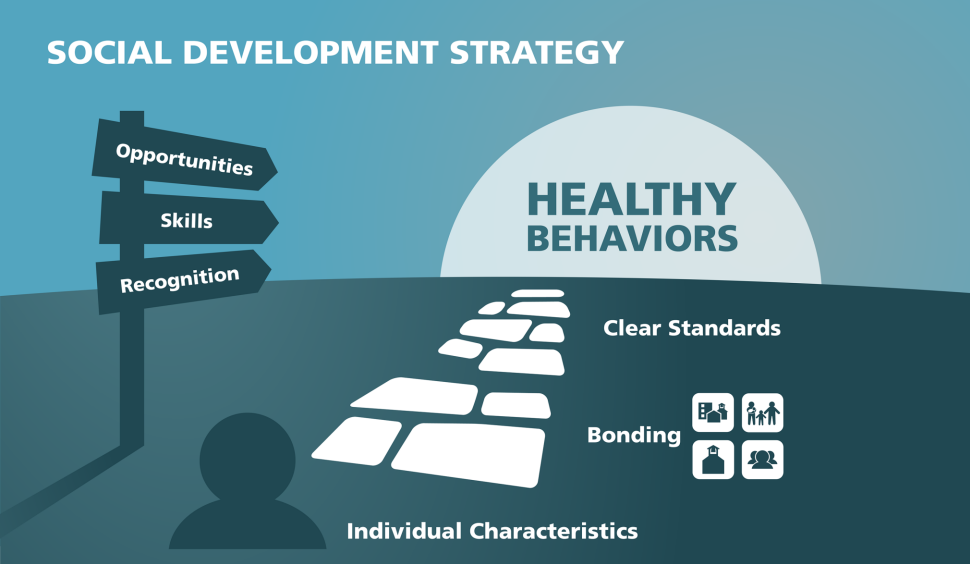
What We Do
Gallatin Valley Communities That Care
...takes a community-wide holistic approach to reducing health and behavioral problems in young people
The CTC model is based on 40 years of prevention science research focused on risk factors and protective factors impacting youth behavior and health.
Critical elements of CTC:
A public health approach to prevent youth problem behaviors
Community-owned and operated by a coalition of key stakeholders from all sectors
Data-driven decision-making
Evidence based proven & effective programs and practices
Outcomes-focused

Studies of communities implementing the CTC model reveal that by the end of the 8th grade:

Additional studies of communities utilizing the CTC model reveal the following outcomes at age 21:
Phase 1 – Get Started
Communities prepare for action by working to identify and recruit relevant community stakeholders and key decision-makers to the Communities That Care process.
Phase 2 – Get Organized
The Community Board, Key Leader Group and relevant governance structures are established to guide decision making and planning for the CTC effort in the community.
Phase 3 – Develop a Profile
A Community Profile Report is prepared using data gathered from the CTC Youth Survey, public data, and assessments of existing community resources and strengths. The Community Board finalizes priorities for action.
Phase 4 – Create a Plan
The Community Board develops a comprehensive Community Action Plan to guide prevention work in the community. This plan outlines chosen evidence-based programs, and relevant outcomes, and allocates roles and responsibility for implementation.
Phase 5 – Implement and Evaluate
Implementation of the Community Action Plan begins, and the Community Board and Key Leader Groups ensure that evidence-based programs and strategies are implemented with fidelity, and evaluated as planned.
How we are Organized
Critical Elements of CTC

Uses a public health approach to prevent youth problem behaviors
Community owned and operated: run by a coalition of community stakeholders from all sectors
Data Driven: the community makes its decisions using the community’s own data
Evidence Based: adoption of effective programs
Outcome Focused: reductions in community levels of adolescent risk taking behavior; improvements in child & youth well-being
It works!
Foundations of CTC
Prevention Science: Risk and Protective Factors
Social Development Strategy
Tested and Effective Programs/Policies
Social Development Strategy
CTC is underpinned by the Social Development Strategy (SDS) - an evidence-based framework which organizes protective factors into a simple strategy for action to promote positive youth development. The SDS identifies the following five key components to increase protective factors for young people in any community:
Healthy beliefs and clear standards for behavior: Young people are more likely to engage in healthy, socially responsible behavior when parents, teachers and the community around them communicate healthy beliefs and clear standards.
Bonding: Strong, attached relationships with those who hold healthy beliefs and clear standards are an important protective influence. To create these bonds, young people need:
Opportunities: Provide opportunities for active participation and meaningful involvement with prosocial others, including families, schools, communities and peer groups.
Skills: Teach young people the skills they need to succeed.
Recognition: Provide consistent recognition and praise for their effort, improvement and accomplishments.
The SDS also recognizes the important influence of individual characteristics on the capacity to take advantage of other protective processes. Characteristics such as positive social orientation, resiliency and intellect can facilitate bonding and, in some cases, can be nurtured by communities and adults.
CTC based in prevention science, and looks at risk and protective factors based on domains.



